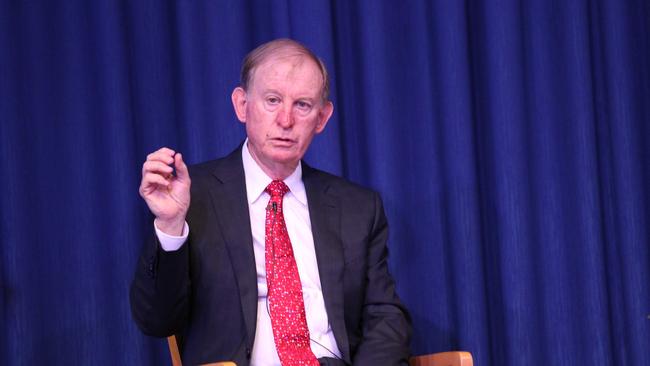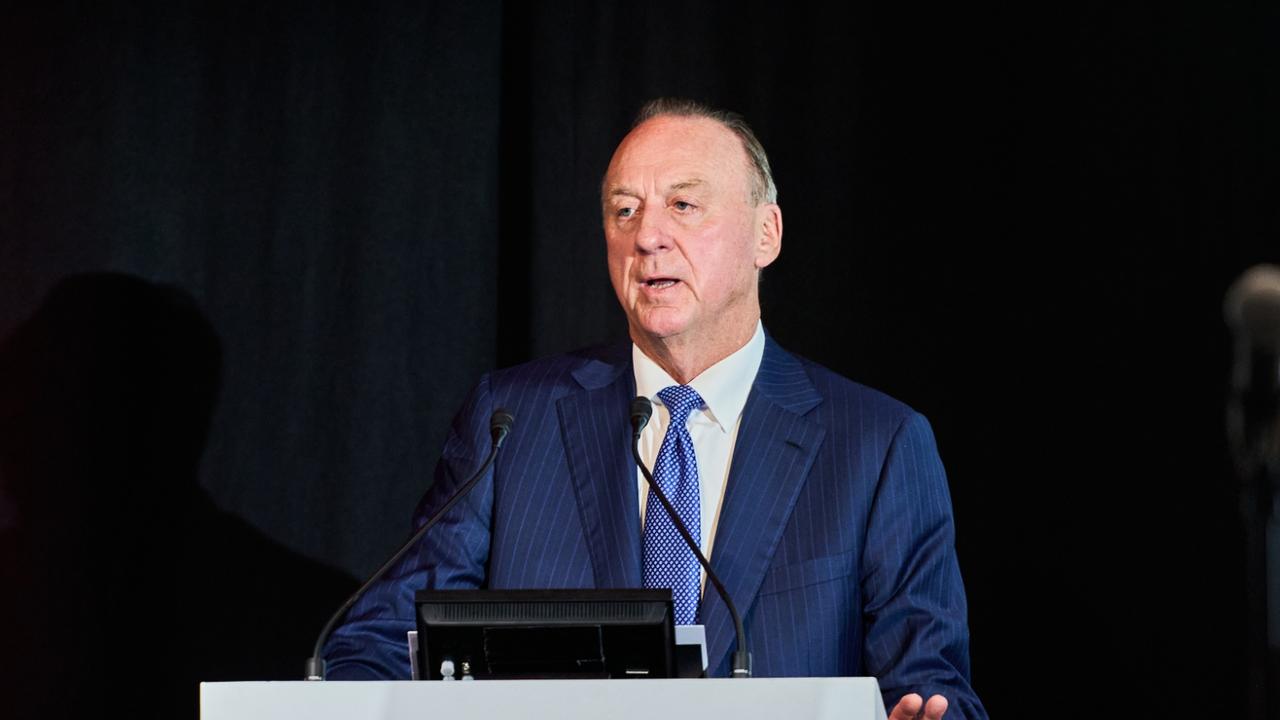AMP rescue mission issue of trust: David Murray
Former Future Fund chairman David Murray agreed to take on the rescue mission at AMP in an effort to restore public faith.

Former Future Fund chairman and career banker David Murray agreed to take on the rescue mission at the crisis-stricken financial services giant AMP because the company was “a key part of the financial system which needs its trust restored”.
Speaking for the first time since being named as incoming chairman of AMP, Mr Murray likened the challenge to turning around his former bank, the Commonwealth, ahead of a stockmarket listing in the 1990s.
“AMP is one of the pillars of the financial system,” he told The Australian yesterday. “Reputation requires some adjustments, and the challenge is to get out in front. The existing business faces changes in the law from the royal commission and the role of the board will be to govern in such a way that value is preserved.”
Although Mr Murray doesn’t start in the role until July, he urged all shareholders to support the re-election of three directors at AMP’s annual meeting in Melbourne on Thursday, asking investors to “trust me to run the board”.
Some investor advisory firms have urged shareholders to vote against the three directors. Among the directors facing a shareholder backlash are former Best & Less chief Holly Kramer and former financial consultant Vanessa Wallace, who both joined the AMP board in June 2016. Mr Murray said the decision faced by shareholders at this week’s annual meeting was “whether to fire all three directors or none. The issue is whether they trust me to run the board.”
Also speaking to The Australian yesterday, AMP’s acting executive chairman Mike Wilkins admitted the financial services major would have its work cut out to rebuild the trust of customers, shareholders and regulators.
Mr Wilkins promised a “a very different organisation”, adding it was important for the nation’s biggest financial planning business to focus on the future.
“I understand that there’s widespread anger at our situation. We’re not hiding from the facts and we know that we’ve let a lot of people down.
“We think it’s really important now (that) we need to focus on the future,” Mr Wilkins said.
He promised wholesale change across remuneration structures, including bonus payments, as well as internal controls across the business.
“We need to show we’re a different organisation,” he said.
UBS analyst James Coghill has said AMP faces a “two to three-year rebuild process” characterised by senior management changes and internal distractions.
For Mr Murray, the AMP role marks his first big company role since leaving as Commonwealth Bank CEO in 2005. He was the inaugural chairman of the Future Fund and chaired the 2016 financial services inquiry.
Mr Murray’s appointment is aimed at drawing a line under weeks of turmoil for AMP, which has included allegations aired at the Hayne royal commission of misleading corporate regulator ASIC in the aftermath of a scandal involving thousands of its customers being charged fees for financial advice that was never delivered.
AMP has had nearly $4 billion wiped from its market capitalisation in recent weeks and a clean out of executive ranks, including chief executive Craig Meller and chair Catherine Brenner.
Meanwhile, Mr Murray said vertical integration — which combines the distribution and the funds management arms of financial advisory houses — was not the problem; rather, it was the incentives around the business model: “The point is not vertical integration but the combination of incentives with product and advice.”
For his part, Mr Wilkins said AMP still had an important role to play in providing financial advice in helping people become self-sufficient at retirement age.
“This is an opportunity to reset and lead the important function that financial advice plays,” he said.




